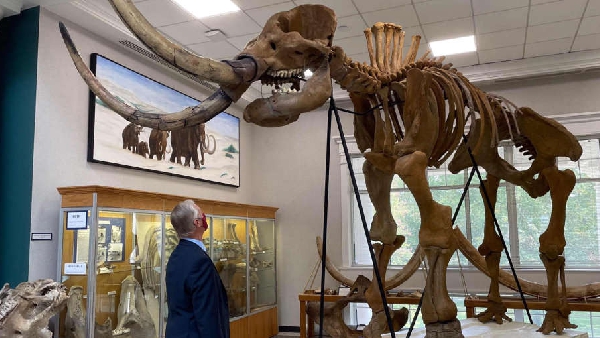Mastodons have been found in nearly all of the state's 92 counties.

State Rep. Randy Frye (R-Greensburg) tours the Hanover College Science Center, which houses a life-size skeletal cast of the world's most complete American mastodon, "The Burning Tree Mastodon." Frye authored legislation that would name the mastodon as Indiana's official state fossil.
STATEHOUSE (Jan. 18, 2022) – State Rep. Randy Frye (R-Greensburg) recently authored legislation to designate the mastodon as the official state fossil of Indiana.
Frye said the remains of approximately 300 mammoths and mastodons have been found in nearly all of the state's 92 counties. In 2019, the remains of a male mastodon were discovered in Seymour in a farm field where workers were installing a new sewer system.
"Indiana is one of the few states that doesn't have an official state fossil," Frye said. "We have a rich history in discovering mastodons, especially in the central and northern areas, and this bill would recognize that connection."
Frye said the inspiration for the bill came from touring the Hanover College Science Center, which houses a life-size skeletal cast of the world's most complete American mastodon, "The Burning Tree Mastodon."
Mastodons are prehistoric relatives of today’s elephants that scientists believe roamed North America, Europe and Asia before becoming extinct more than 10,000 years ago.
House Bill 1013 has been assigned to the House Committee on Government and Regulatory Reform for consideration. Watch session and committees live, and view legislation at [iga.in.gov]iga.in.gov.

 Kentucky's Governor Declares State of Emergency Ahead of 4-Day Severe Weather Event With Possible Tornadoes
Kentucky's Governor Declares State of Emergency Ahead of 4-Day Severe Weather Event With Possible Tornadoes
 Indiana Attorney General combats contraband cell phones in prisons
Indiana Attorney General combats contraband cell phones in prisons
 Kentucky State Police Traffic Safety Checkpoint
Kentucky State Police Traffic Safety Checkpoint




